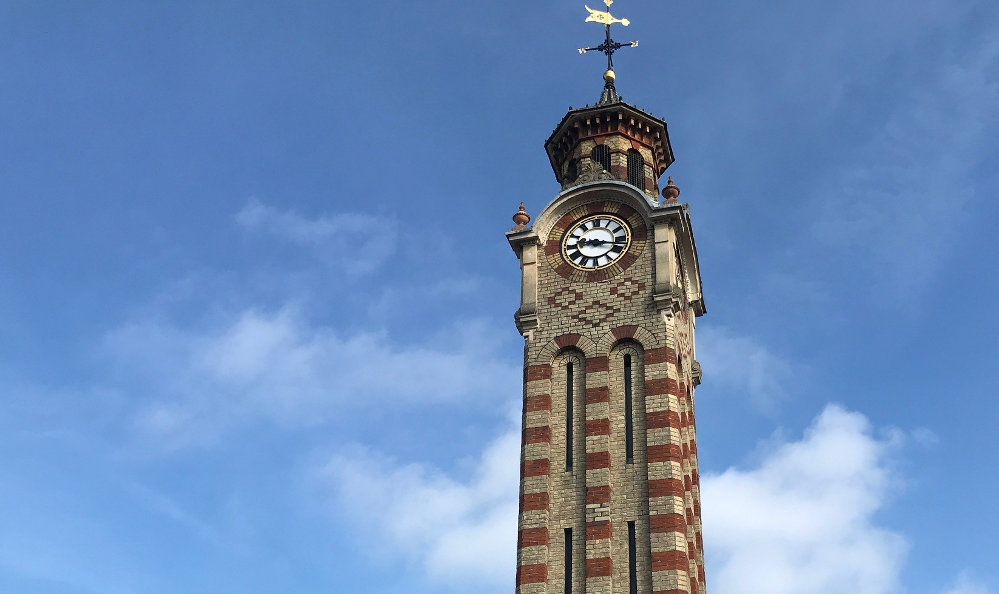
Discover Some Amazing Historical Facts About Epsom
Discover Some Amazing Historical Facts About Epsom
A quick history tour around Epsom in Surrey – from the origins of the Epsom Clock Tower to The Assembly Rooms, here is all you need to know…
Epsom Clock Tower
One of the most recognisable features of the town centre is the Epsom Clock Tower. But did you know that we’re not entirely sure when it was built? The traveller Celia Fiennes (author of highly entertaining memoir “Through England on a Side Saddle in the Time of William and Mary”) noted its existence by the end of the 17th century with typical for her, succinct ‘The Crosse in the Streete has a Good Clock’.
The Watch House was divided into two sections: a fire engine house and a provisional lock-up. The village constable received compensation from the parish vestry for his services in escorting prisoners to their trials in the nearest town after they had been detained overnight.
Following the decision of the vestry to demolish the Watch House and sell its materials, including the clock, the responsibility of redesigning the structure was assigned to James Butler and Henry Hodge, two architects from London. The Builder magazine published a report stating that the new design would feature openings for the dials measuring four feet six inches and would be constructed using a combination of red and Suffolk bricks. Additionally, the design would include four lions made of Caen stone, each bearing a shield.
The laying of the foundation stone of Epsom Clock Tower took place on 19 November 1847. Thomas Tompson, the chairman of the rebuilding committee and owner of a linen drapery shop where Waterstones currently stands, had the honor of performing the ceremony. Following the event, Tompson’s committee dined at Kings Head, while the local community rejoiced with beer-filled festivities in the streets.
Horton Country Park
Did you know that Horton Country Park used to be part of the estate owned by Surrey’s very own High Sheriff, John Trotter? Back in 1896, a chunk of the land was sold off to make way for the construction of not just one, but five mental health hospitals – forming what we now know as the Epsom Hospital Cluster.
The estate itself was massive, complete with a grand mansion, lush gardens and grounds, dense woods, and even four farms that provided enough food to sustain the entire cluster. Talk about self-sufficiency! The hospitals were so massive that at its peak, it housed over 8000 patients – that’s a lot of people to take care of!
To keep the cluster running like clockwork, a power station was built to supply energy to all five hospitals, and an extensive railway system was put in place to transport goods and people from one end of the cluster to the other. Can you imagine how bustling this place must have been in its heyday?
As time went on, advancements in medical technology and the formation of the National Health Service led to changes in the way psychiatric patients were treated. Many of them were transferred to general hospitals, which meant that the Epsom Hospital Cluster gradually declined.
Sadly, two of the farms within the cluster were left deserted. But all was not lost! In 1973, the Epsom and Ewell council swooped in and purchased the land, breathing new life into the area. One of the farms, West Farm, was transformed into what we now know as Horton Country Park – a stunning 400-acre open parkland that’s perfect for walking, cycling, and getting back to nature.
The other farm, Long Grove Farm, also found a new lease of life as it was turned into Hobbledown Farm Park. This family-friendly attraction has become incredibly popular with people from all over, who come to see the animals, play in the adventure playground, and explore the woodland trails.
Epsom Salts
Let’s talk about Epsom Salts, the miracle mineral compound that turned a quiet rural town into a bustling spa destination. Back in the day, folks stumbled upon water that was packed with magnesium sulphates – a fancy way of saying Epsom Salts – and voila! The town of Epsom was transformed into a mecca for spa enthusiasts. It was so popular, even the esteemed Samuel Pepys couldn’t resist a visit.
The Assembly Rooms
The Assembly Rooms in Epsom High Street are an absolute marvel – built in 1692, they’re not only one of the first buildings of their kind in England, but also the oldest one still standing today. These rooms served as a hub for everything from meetings to merry-making, housing not only meeting rooms, but also the town’s tavern, coffee house, billiard room, and even gaming rooms. And that’s not all – tucked away behind the building, there were all sorts of attractions to keep visitors entertained, from a bowling green and cockpit, to possibly even a bear-baiting pit (yep, you read that right!). It’s no wonder that these rooms were the talk of the town back in their heyday.






